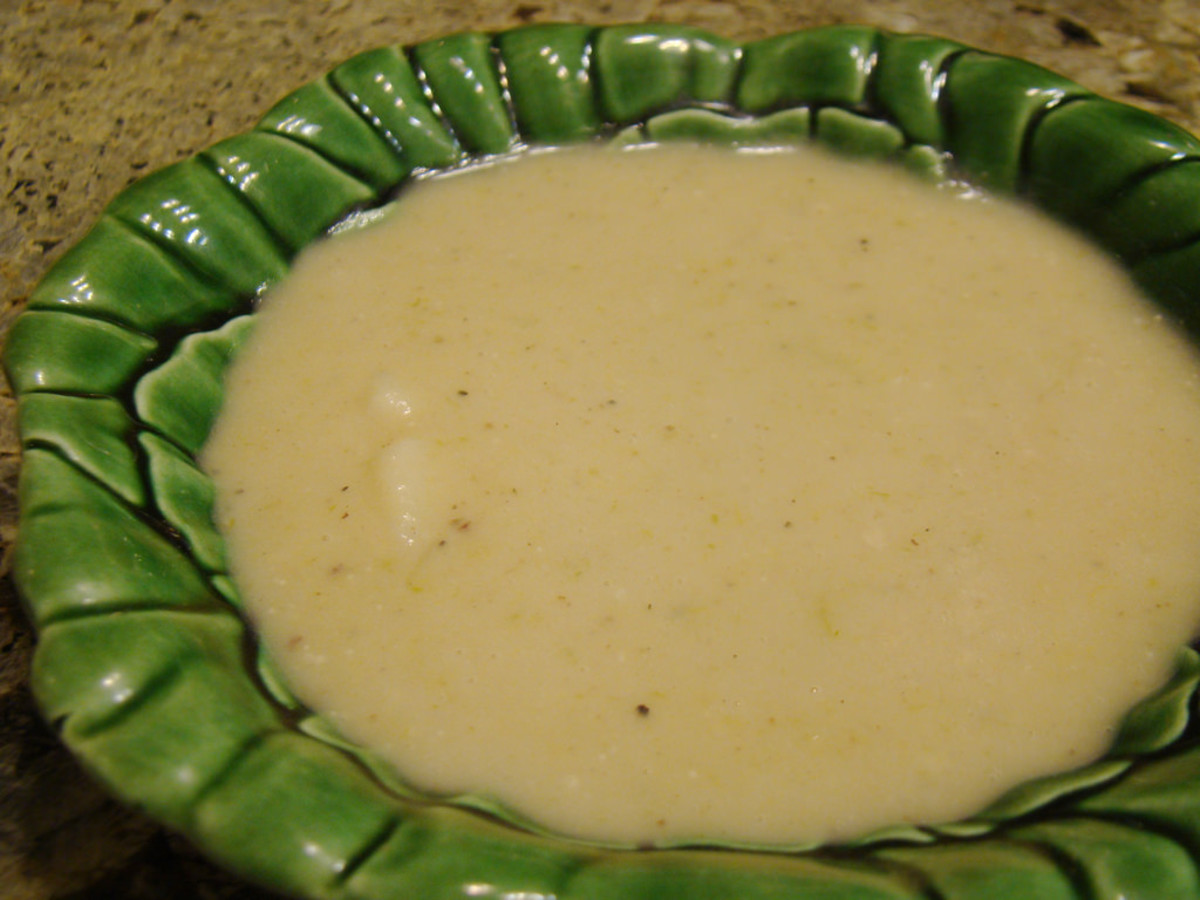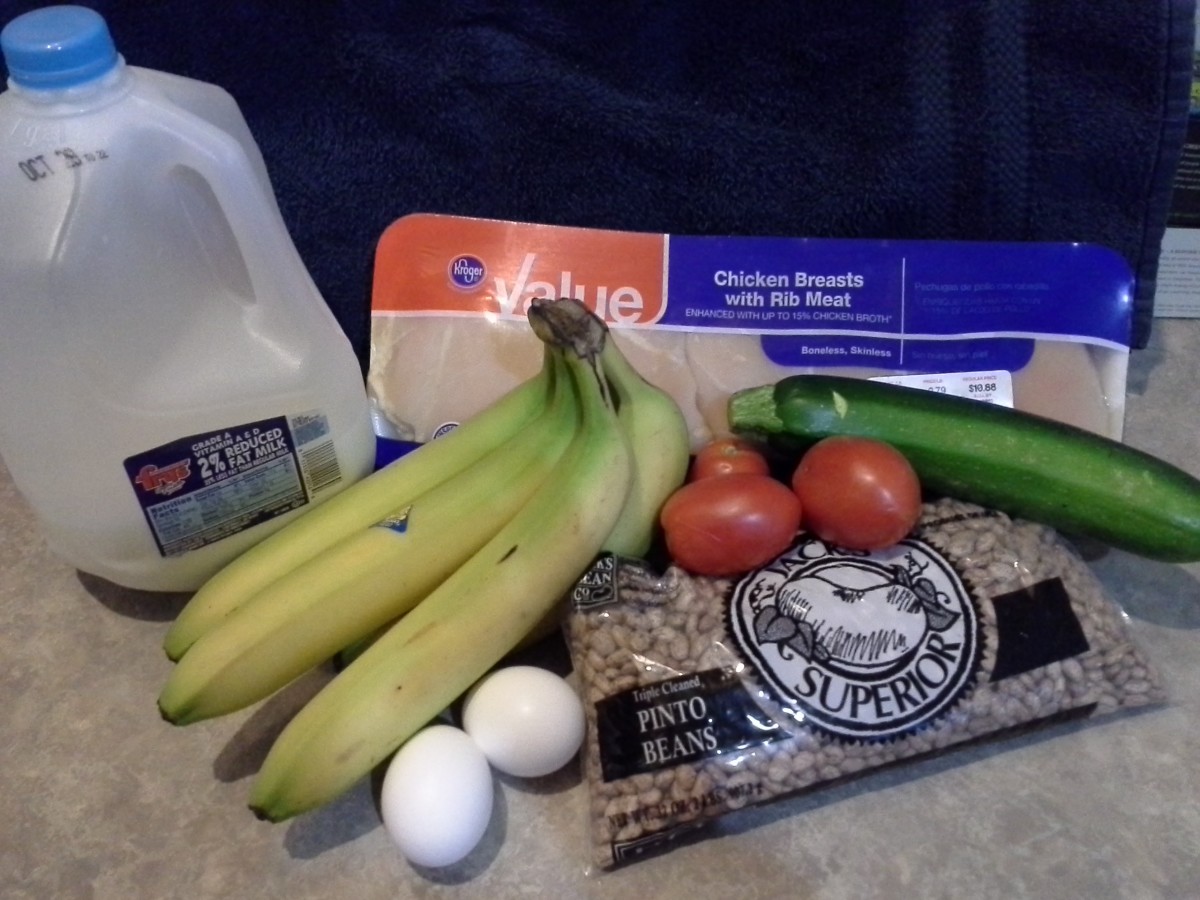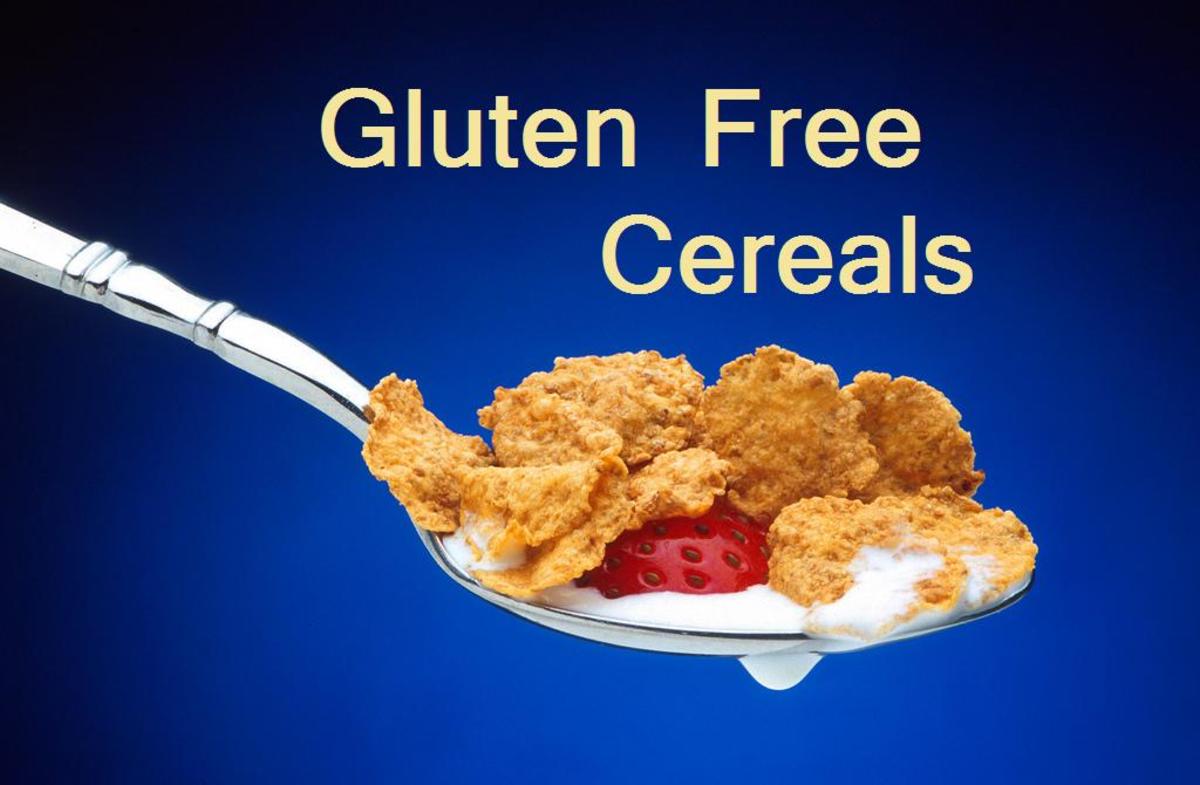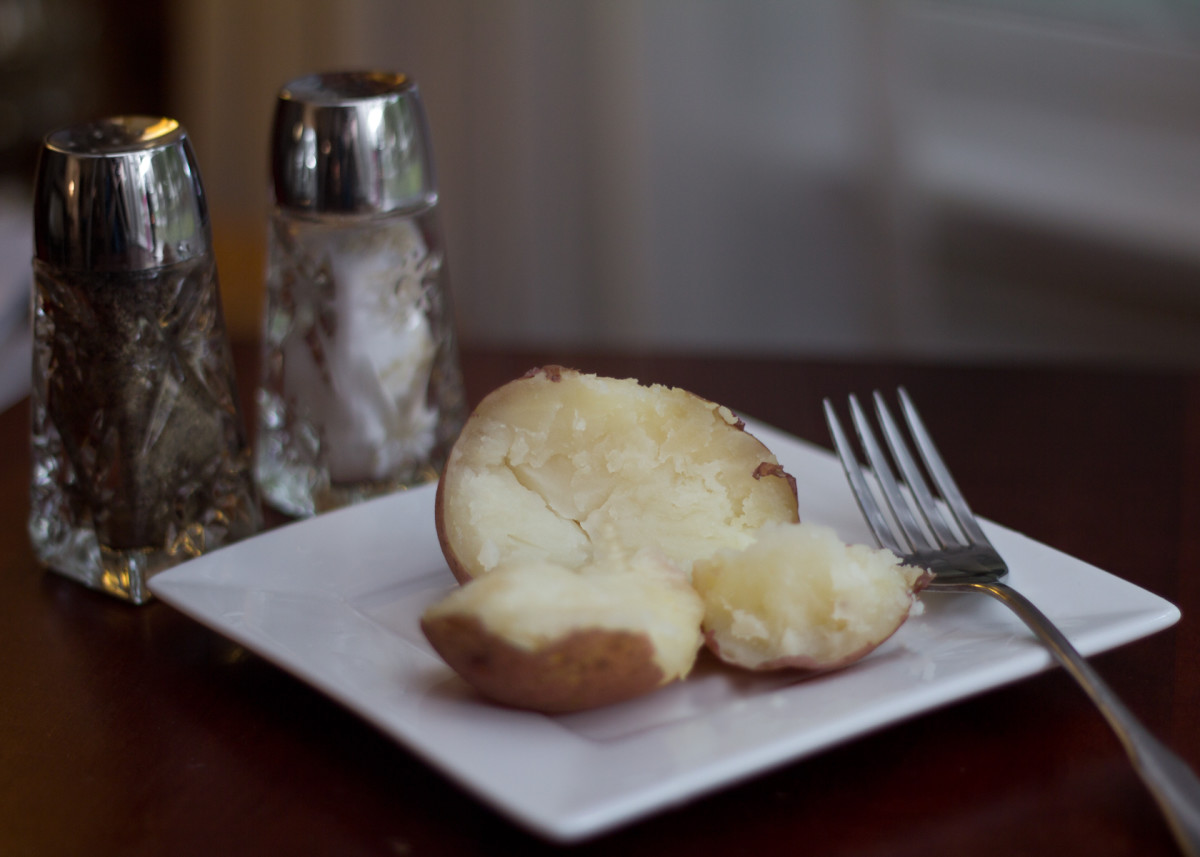Basic Essentials for Stocking the Gluten-Free Pantry
Gluten Free Lifestyle
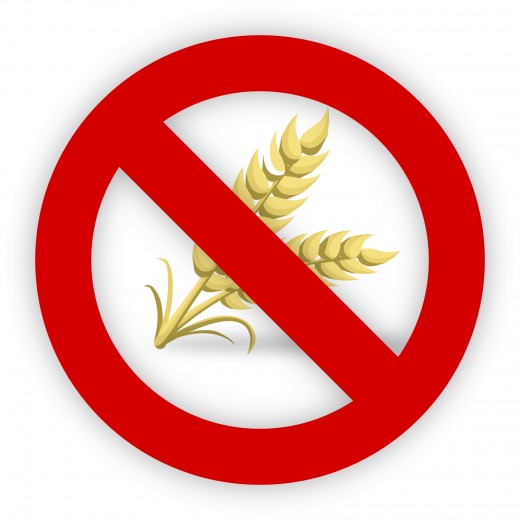
Diagnosis & Change in Lifestyle
Have you been diagnosed as having a wheat or gluten allergy? Do you have celiac disease? Life after being recently diagnosed with wheat or gluten allergies, or having been diagnosed with celiac disease, can be very overwhelming. You’ve been told to avoid all foods containing these ingredients, and are now faced with eating rice cakes the rest of your life. But your new diagnosis doesn’t mean a life of doing without the good foods you love. How do I know? Several years ago I was diagnosed with allergies to wheat, barley and oats, and told to stay away from these completely. The time just after the diagnosis was one of the hardest in my life. But with self-education and research I’ve been able to maintain a very good diet with no wheat or gluten, for eight years, now.
I would like to share with you advice on how to start out on your journey of living a wheat- and gluten-free life. It can be done! The process of changing over from a wheat and gluten lifestyle, to wheat- and gluten-free takes time and education, but once you’re established, Life goes back to a new normal, allowing you to have your favorite foods by using alternative ingredients. With trial and error you will learn how to make fabulous dishes for your whole family. Now, I would like to concentrate on the steps leading you to buy the basic contents of a well-stocked wheat- and gluten-free pantry.
Assessing your Allergies & Self-Education
Assessing Your Allergies
The first job you have is going through and making a list of all the ingredients you’ve been told are now off your menu. Go through your known allergy list and make note of those food ingredients you must avoid. It is very important to completely avoid these ingredients and foods in order for you to stay healthy.
Eliminating favorite foods from your diet's not easy. It can feel like you're losing so many good things due to your food allergies. Life can take on a dismal hue at this point, and you wonder how on earth it will be possible to live on this new, restricted diet. But don’t give up—keeping reading! Life will get better again!
Learning to Read Ingredient Labels
Learning how to read ingredient labels, the next step in establishing your wheat- and gluten-free pantry, is an education and an art. At this point, I would recommend finding very good books about wheat- and gluten-free diets. One of the first books I came across has become my cooking “bible,” and this is a cookbook by Bette Hagman called The Gluten-Free Gourmet: Living Well without Wheat, Revised Edition.
The Gluten-Free Gourmet offers great recipes, but the book also offers a great list of common ingredients that actually contain wheat (though these ingredients are often called by other names) or have wheat in them. These “hidden” wheat and gluten ingredients can be the undoing of your health, so careful label reading is a must when grocery shopping.
The Gluten-Free Gourmet also offers advice on how to travel and eat-out with wheat and gluten allergies. In addition, the author offers lists of companies you can find online to buy products for your new diet. This book is a great starting point on your wheat- and gluten-free lifestyle.
Now that you’ve made a list of the ingredients and foods you must avoid on your new diet, the next step is to actually begin stocking your pantry with the foods you can eat. Read all labels very carefully and you’ll have a safe and wonderful diet rich in your favorite foods.
Yes! You Can Eat This on a Gluten Free Diet!

Homemade Bread
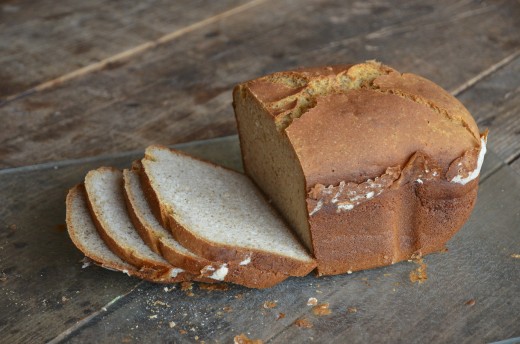
One Note Before You Shop
Re-stocking your pantry, after allergy testing, appears to be daunting at first. Reading labels, searching out exactly what the ingredient labels mean, and then shopping is all quite a bit of work. You will truly receive an education just by reading labels and learning exactly what is in the food you’re eating. Actually, when I first began reading labels I was dismayed by all the extra ingredients that go into our food; ingredients that aren’t really necessary, except to preserve taste and freshness. The process of reading labels led me to cooking from scratch. Also, eight years ago, it was more difficult to find pre-packaged cookies, meals, etc. for a wheat- and gluten-free diet.
Cooking from scratch puts you in complete control of what goes into you food and into your body. Preservatives, salt and other unhealthy ingredients are cut down in your food. Not only is the food healthier for you, but also for your family. Most of the dishes in each meal, at our house, are usually completely wheat- and gluten-free. This is because cooking double of everything is both time-consuming and expensive. Most of the meals I cook taste as good as the “real” versions of these dishes. It took trial and error (insert the word “experiments”) to reach this point, but it can be done. Learning to cook from scratch is also a bit overwhelming for those who are have very busy schedules and have family members to also take care of. With time, experience and research you will once again be able to shop and cook efficiently knowing your food is good, healthy and safe for you to eat.
However, if you’re just not up to cooking from scratch, there is a wonderful variety of pre-packaged foods now readily available for wheat- and gluten-free diets. You can find many items—from cookies and crackers to breads and more—at health food stores, and even at most grocery stores. So, you don’t have to cook from scratch—you also have the option of cooking with pre-packaged foods!
Reading Food Labels
Stocking Your Pantry
Now you have your allergen list (food and ingredients you must avoid) in hand it’s time to visit the grocery or health food stores to find what you will need to have to re-stock your pantry. What are the basics needed for a well-stocked wheat- or gluten-free pantry? The list is pretty much the same as for a regular wheat kitchen, but you will need to have a few different ingredients. Here’s a list of items most pantries stock as basics (does not include refrigerated or frozen foods):
Alternative Flours. It is best to start out with rice flour and then move on to experiment with other alternative flours. This is because the rice flour is usually the least expensive and the easiest to find in health food and grocery stores. And rice flour, in my experience, was the easiest to use when I started out on this journey. Otherwise, there are so many alternative flours to try that you will never grow tired of experimenting with new textures and flavors.
Vinegar. Distilled, white vinegar is the safest for those who need to avoid wheat and gluten in their diets. Do not use if the ingredient label includes “malt.” Also, if you are allergic to apples, stay away from cider vinegar. Otherwise, most flavored vinegars (made from distilled vinegar) are safe.
Oils. Most oils are safe for those on a wheat and gluten restricted diet. Be sure to read the labels for any allergens that might be used to flavor the oils. Basic oils recommended for cooking are extra virgin olive oil and sunflower oil, or canola oil.
Spices. Some spices include wheat in order to keep the spice from clumping together and to add texture. Try to buy only from manufacturers who use straight spices with no other added ingredients. Of course, if you’re like me and have a spice you’re allergic to (cinnamon in my case), avoid that spice all together.
Worcestershire and Soy Sauces, Ketchup. Unfortunately, these sauces, including Ketchup, do contain wheat. However, it is possible to find safe versions of these sauces to use in your cooking. Look for brands that are wheat- and gluten-free. These brands are most often found at specialty stores, such as health food stores or online stores catering specifically to those who must avoid wheat and gluten.
Other cooking and baking
staples. Other cooking and baking staples include
baking soda, baking powder, and vanilla.
Who would have thought these staples might contain wheat? But they often do. The wheat is used as a stabilizer. Again, you
must read labels and find those products that are wheat- and gluten-free. You can find these at health food stores,
some grocery stores, and online stores catering specifically to those who must
avoid wheat and gluten. And don't forget to add either xanthan or guar gum to your wheat- and gluten-free pantry. These are added to certain recipes as a binder (to replace the gluten), and they also offer a bit smoother texture to baked goods.
Eggs are Naturally Gluten Free
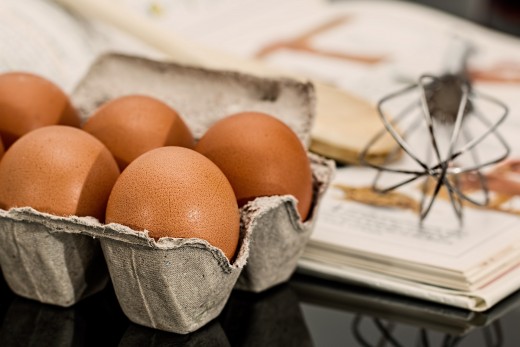
Helpful Gluten-Free Information
Save money--make your own rice flour: this article talks about how to make your own rice flour for baking and cooking which is much cheaper than buying pre-packaged rice flour.
Good luck with your new Wheat- and Gluten-Free Life!
With proper education and experience it is possible to go on to a very successful, healthy and delicious life without wheat and gluten. Here are some links to other articles online offering advice about how to save money on a wheat- and gluten-free diet.
Good luck with your new wheat- and gluten-free life!
Disclaimer
I am not a health care professional, and do not claim any special knowledge about living a wheat- or gluten-free lifestyle. I am writing only to share my own experience with others who may be suffering from wheat and gluten allergies. Please follow this advice at your own risk. I am not responsible for any results you might have as the outcome of following the advice presented in this article. Always first check with your doctor and other health care providers before making any changes in your daily living situation, diet or medications.
© 2010 Sherry Vacik



